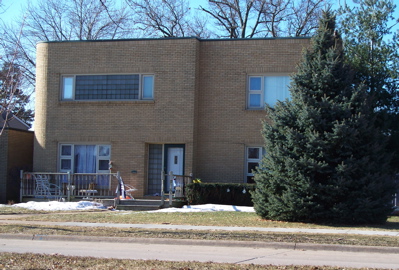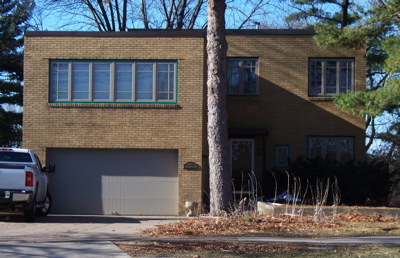Encyclopedia Dubuque
"Encyclopedia Dubuque is the online authority for all things Dubuque, written by the people who know the city best.”
Marshall Cohen—researcher and producer, CNN
Affiliated with the Local History Network of the State Historical Society of Iowa, and the Iowa Museum Association.
INTERNATIONAL ARCHITECTURE
INTERNATIONAL ARCHITECTURE. International style of construction is identified by its lack of ornamentation, flat roof, smooth walls, and windows that appear to be continuations of the wall because they are not recessed.
One of Dubuque's examples of International Architecture is found at 155 South Grandview. The plans for the house took first prize in the General Electric Architectural Building Contest sponsored in the spring of 1935 by General Electric. Groundbreaking for the home was attended by MAYOR Mark R. KANE and a panel of officials representing the city council, Federal Housing Administration, Home Owners' Loan Corporation, city park board, and many business interests.
Called the "New American Home," the design was said to incorporate "use sequence." House plans were drawn to enable occupants to move from one location to another with the fewest number of steps. Rooms were said to be exceptionally large for the amount of cubic footage. These plans allowed the use of 80 to 85 percent of the usable area rather than the usual 65 to 70 percent.
The term "International Architecture" is believed to have been first used in February and March 1932, by the Museum of Modern Art in New York City. Among the famous architects who began their careers in the style were Marcel Breuer, Ludwig Mies van der Rohe, and Walter Gropius. Using concrete, steel and glass as their favorite materials, architects of the International school often created corner windows with mitered glass having no support. Although many architects moved on to other styles, the simplicity of International architecture has been seen by experts to continually influence more modern work.




